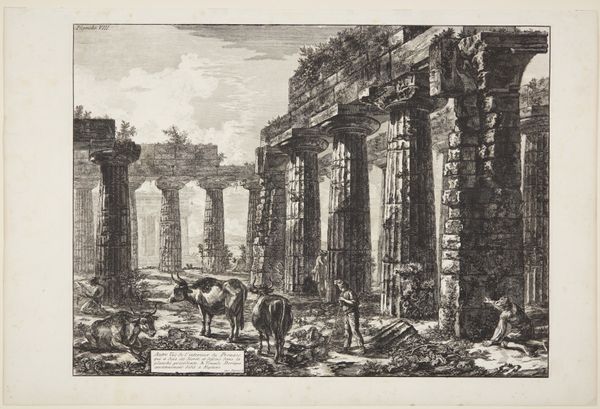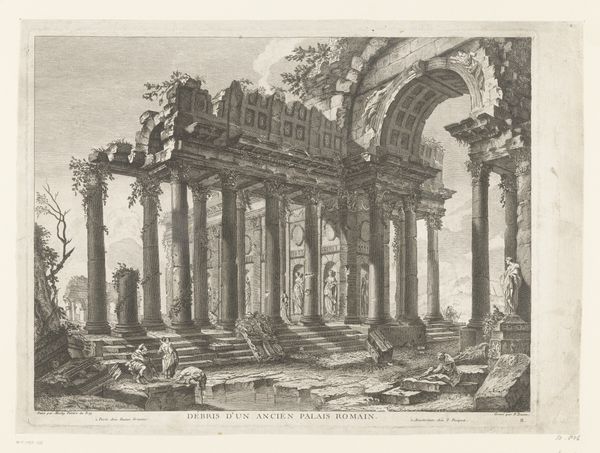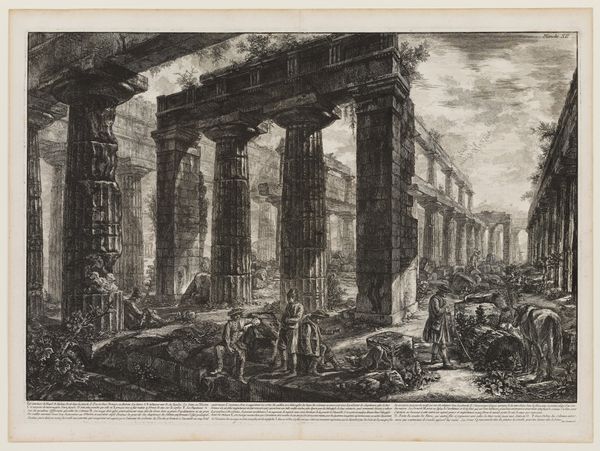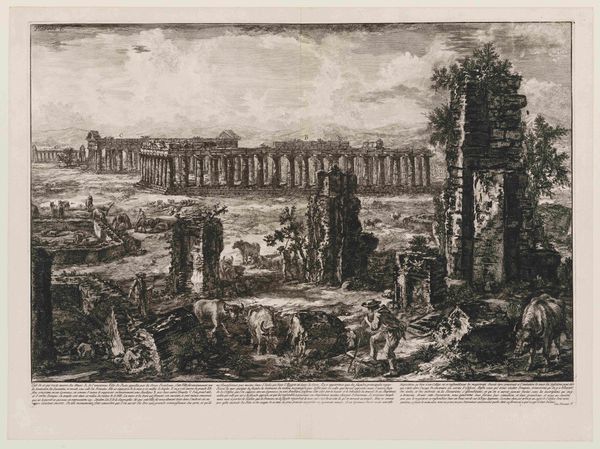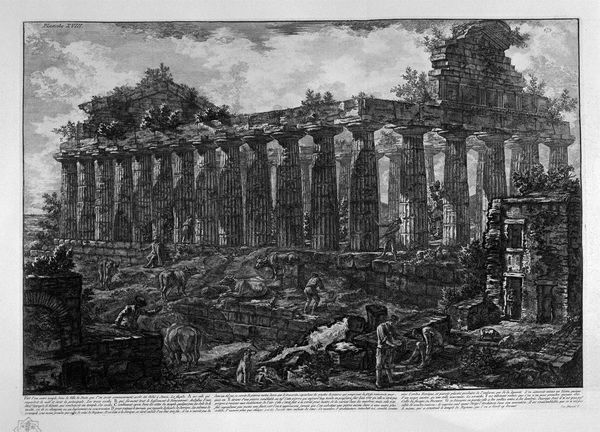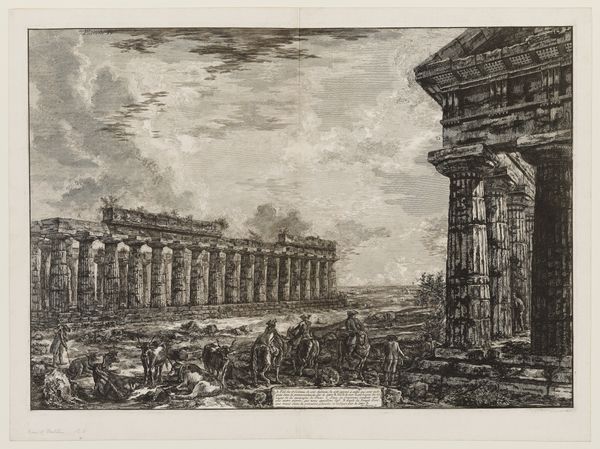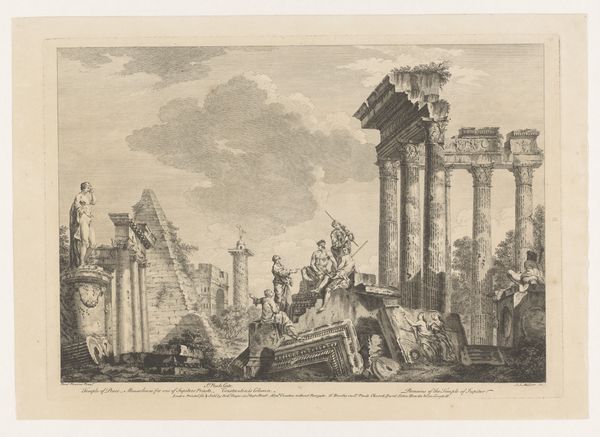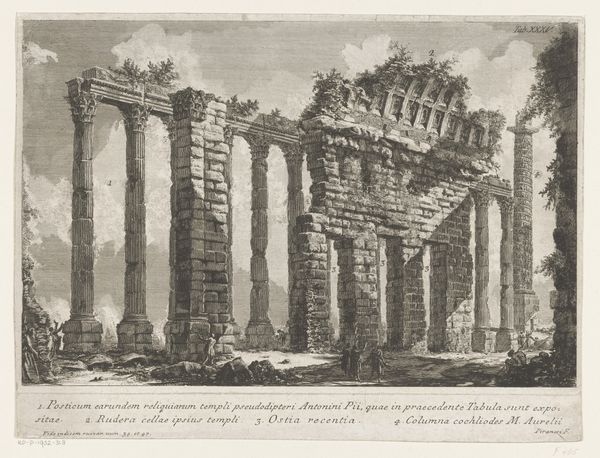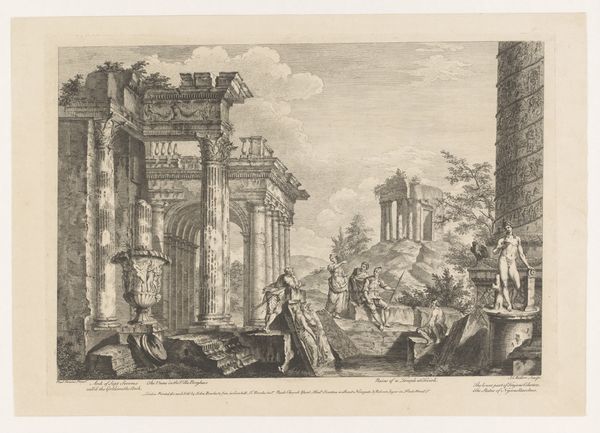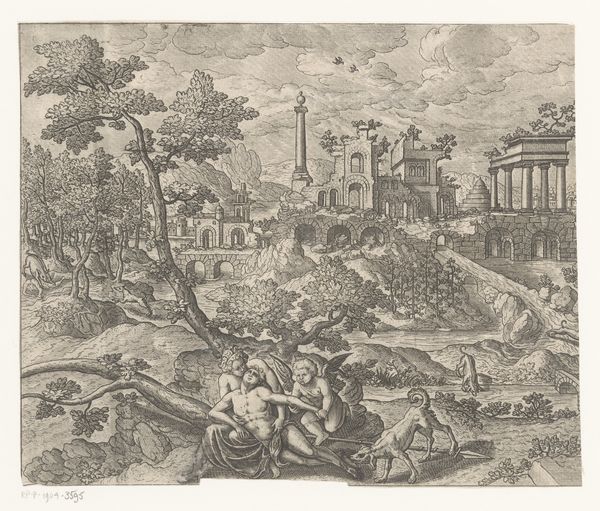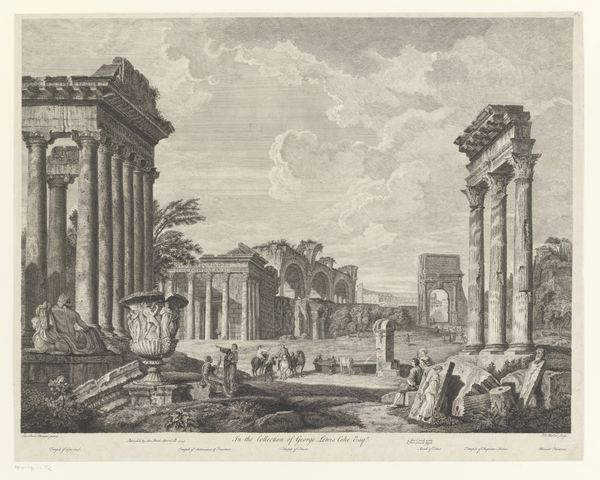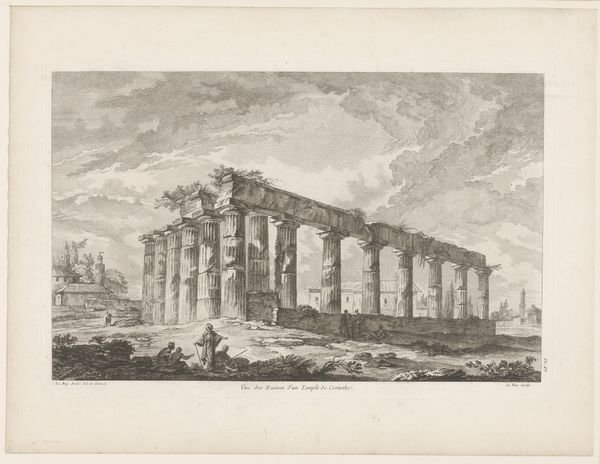
print, etching, architecture
#
neoclacissism
# print
#
etching
#
landscape
#
ancient-mediterranean
#
history-painting
#
italy
#
architecture
Dimensions: 19 1/16 x 26 7/8 in. (48.42 x 68.26 cm) (plate)21 3/16 x 28 1/2 in. (53.82 x 72.39 cm) (sheet)
Copyright: Public Domain
Curator: I’m struck immediately by the sheer industriousness depicted here. It feels like a construction site frozen in time, despite the decay. Editor: Indeed. We’re looking at "General View," a 1778 etching by Giovanni Battista Piranesi, currently residing at the Minneapolis Institute of Art. The artwork embodies Neoclassical fascination with antiquity. Curator: The scale is incredible, and the detail Piranesi achieves with etching is astonishing. You can practically feel the grit of the stone. But, to your point about industriousness, why populate the image with laborers dismantling this classical structure? Editor: Ah, there’s the crux of the matter. Piranesi wasn't merely documenting ancient ruins; he was making a statement about the transient nature of power and empire, and about the continual appropriation of the past. This romantic ruin exists on paper, it’s there to be studied but the image also points at an industry; he’s showing us the contemporary labor reshaping that history. The past isn’t pristine. Curator: So, by showing us the deconstruction, the quarrying, he’s implicating us, the viewers, in the ongoing cycle of consumption and destruction? What was made can also be unmade by material demand. Editor: Precisely. The architecture of power gets translated into labor, industry, and consumption through processes visible through printmaking, then dissemination. Print allows him to offer this vision to a wider audience to propagate a shared visual history, however flawed. Curator: The very act of creating and distributing this etching becomes a part of the process he depicts. Is Piranesi inviting critique on how art acts on the perception of monuments? The placement of workers give new context to history painting by asking "how does art serve labor" and who gets memorialized? Editor: Yes, he underscores the museum’s role as cultural arbiter. His print asks us to consider how and why we create history, as well as which versions of the past we amplify through art. It is not lost to me that he’s using an easily reproducible medium to comment on architecture in this way. Curator: Food for thought on who gets to create meaning in this world of stone and ink. It truly adds layers to viewing. Editor: It’s a remarkable piece, layering technical skill with incisive social commentary.
Comments
No comments
Be the first to comment and join the conversation on the ultimate creative platform.
